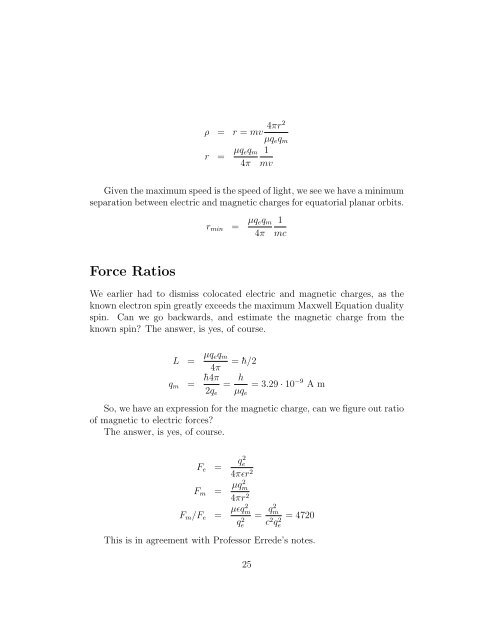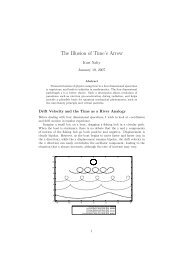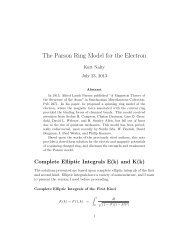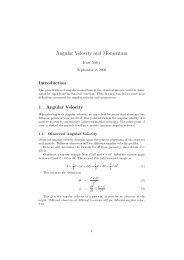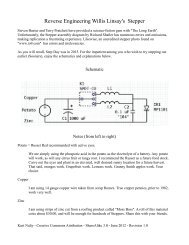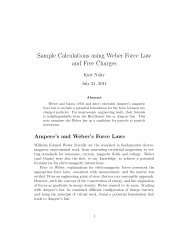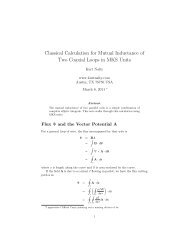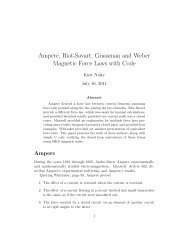Exercises with Magnetic Monopoles - Kurt Nalty
Exercises with Magnetic Monopoles - Kurt Nalty
Exercises with Magnetic Monopoles - Kurt Nalty
Create successful ePaper yourself
Turn your PDF publications into a flip-book with our unique Google optimized e-Paper software.
ρ = r = mv 4πr2<br />
µq e q m<br />
r = µq eq m 1<br />
4π mv<br />
Given the maximum speed is the speed of light, we see we have a minimum<br />
separation between electric and magnetic charges for equatorial planar orbits.<br />
r min = µq eq m<br />
4π<br />
1<br />
mc<br />
Force Ratios<br />
We earlier had to dismiss colocated electric and magnetic charges, as the<br />
known electron spin greatly exceeds the maximum Maxwell Equation duality<br />
spin. Can we go backwards, and estimate the magnetic charge from the<br />
known spin? The answer, is yes, of course.<br />
L = µq eq m<br />
4π<br />
= ¯h/2<br />
q m = ¯h4π<br />
2q e<br />
= h<br />
µq e<br />
= 3.29 · 10 −9 A m<br />
So, we have an expression for the magnetic charge, can we figure out ratio<br />
of magnetic to electric forces?<br />
The answer, is yes, of course.<br />
F e =<br />
q 2 e<br />
4πɛr 2<br />
F m = µq2 m<br />
4πr 2<br />
F m /F e = µɛq2 m<br />
q 2 e<br />
= q2 m<br />
c 2 q 2 e<br />
= 4720<br />
This is in agreement <strong>with</strong> Professor Errede’s notes.<br />
25


